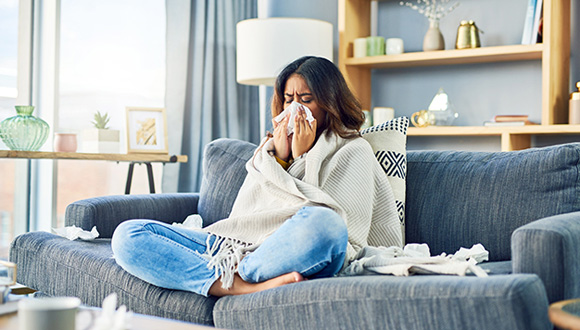It's summer — a time for fun in the sun, and time to seek out some much-coveted shade. Whether you're planning a backyard barbecue with family, the perfect picnic in the park, or a quick road trip for a change of scenery, the one thing you probably aren't planning on is catching a summer cold.
At first, you might think that your summertime sniffles are just allergies.
But you start to reconsider once you experience the telltale signs of the common cold:
- Runny nose
- Sore throat
- Sneezing
- Body aches
- Cough
- Fatigue
- Headache
- Fever
But, how can you have a cold when it's hot outside, anyway? A summer cold — that's an oxymoron. It doesn't make sense. Or does it?
What is a summer cold anyway?
Well, the common cold gets its name from the fact that it usually spreads during the colder months of the year when rhinoviruses and a few other common-cold-causing viruses tend to thrive better.
Because the cold so easily spreads from person to person, the average adult will catch a cold two to three times every year — mainly during winter and spring — and it usually lasts from seven to 10 days. It's also one of the leading causes of missed work for adults and school absences for kids.
Viruses that cause summer colds aren't just overachieving, fun-killing, super-mutant rhinoviruses that manage to survive the sweltering summer sun — even though it may feel that way. More than 200 viruses cause common cold symptoms; and different ones thrive during different seasons throughout the year.
After rhinoviruses, enteroviruses, which tend to flourish in warm weather, are the second leading cause of the common cold. Although you can get a rhinovirus in the summer, what's more likely the cause of your summertime woes is a group of about 60 nonpolio enteroviruses.
Like rhinoviruses, enteroviruses can spread through respiratory droplets, such as saliva or mucus, from an infected person coughing or sneezing, or from touching a surface with unwashed hands. But unlike rhinoviruses, enteroviruses can bring a little something extra to your next backyard cookout — gastrointestinal symptoms, such as nausea, vomiting and diarrhea. That's because the virus is also present in the stool of an infected person.
That's why it is so important to practice good hand hygiene, cover your cough and sneezes, avoid people when they are sick, and regularly clean and disinfect commonly used surfaces — and not just during cold and flu season, but all year long, especially if you or someone who lives with you is sick.
How can you tell a summer cold from the flu, allergies and COVID-19?
Distinguishing a cold from allergies or flu isn't always easy.
And with COVID-19 now in the mix, there's even more room for uncertainty.
If your symptoms start ramping up, the first step is to understand which symptoms separate a cold from other common respiratory illnesses and what to do if you think it might be COVID-19.
Regardless, it's always best to stay home and avoid contact with others when you're ill.
What's the best way to treat a summer cold?
Just like treating a winter cold, you should be able to treat summer cold symptoms at home using a few home remedies and over-the-counter medications, coupled with lots of rest and drinking plenty of water (while binge-watching your favorite TV series, of course).
If you need medical treatment, contact your doctor or consider virtual urgent care, so that you can talk to a health care provider from the comfort of your own home and avoid spreading germs to others. A doctor can also help you determine if your symptoms may be more consistent with COVID-19 and whether you need to get tested.
Need care now?
Houston Methodist Virtual Urgent Care offers on-demand video visits from wherever you are, no appointment needed. Our board-certified providers are available 24/7 to address many common health issues.








